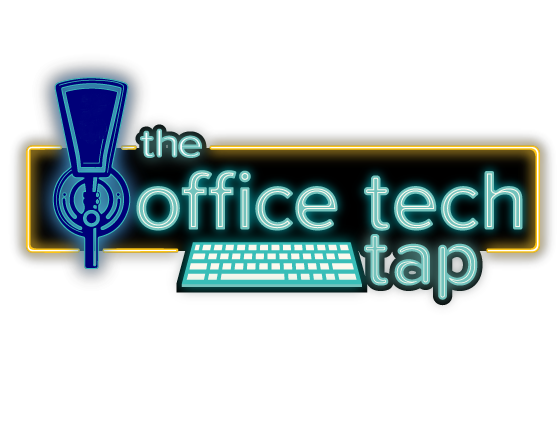How Technology Can Make Or Break Efforts To Get Employees Back In The Office

May 18, 2023
Industry
Employees Seek Modern Workplace Technologies
Technology can make or break an employee’s desire to return to the office.

Although the Covid-19 public health emergency has officially ended, many businesses are still challenged to bring employees back to the office. Workplace insights from Appspace reveal that the lack of motivation to return to the office stems in part from productivity and connectivity issues.
The report recommends that business leaders adopt modern workplace technologies to address these concerns to boost productivity and engagement. The majority of employees (70%) surveyed agree they waste time transitioning from working outside the office to working at the office.
Only 3% of employees operate entirely on-site compared to 44% that completely work from home. Additionally, 28% of employees believe that their organizations still haven’t adopted technologies to capabilities that support them returning to the office. Areas that needed improvement included capabilities to share updates across the organization, connecting employees around shared personal interests, and helping employees work more collaboratively regardless of whether they’re in-house, on-site, or a mix of both.
Recommendations:
1. Digital signage to make spaces more engaging. These can display company information, be used for presentations, and become a destination to drive creativity and innovation.
2. Employee apps such as space reservation tools and wayfinding to improve efficiencies.
3. Space allocation for personal desks and collaborative spaces.
– Greg Walters, Head Writer
Industry
Clover Imaging Group Rebrands as Clover Environmental Solutions
Name Change Reflects Clover’s (and the Industry’s) Commitment to Sustainability

Illinois-based printer cartridge collector and remanufacturer Clover Imaging Group announced last week that it has rebranded under a new name: Clover Environmental Solutions. In its press release, Clover explained that the name change reflects the company’s commitment to environmentally sustainable lifecycle management services and solutions. The name change also highlights Clover’s strategy to shift more of its business away from printing supplies and peripherals as the industry continues to contract.
Just last year, Clover announced its exit from the European market, citing pandemic-related cost increases and supply chain disruptions that hit the region particularly hard. Ironically, that announcement came less than three months after Clover opened a new distribution facility in the UK. The 180-degree shift suggests that Clover had to pivot its business plans rapidly. In January of this year, Clover also announced it would move its remaining US remanufacturing operations from Ithaca, NY to Mexicali, Mexico as a cost-cutting measure.
Despite the name change, Clover stated that its existing brands will stay put under three new divisions:
1. The Sustainable Imaging Supplies Division will market and sell existing Clover brands including Clover Imaging Group, Depot International, and Latin Parts.
2. The Fulfillment Services Division will leverage Clover’s 2022 acquisition of Phoenix Direct to provide end-to-end logistical solutions.
3. The Returns Management Solutions Division will help manufacturers and retailers recover, refurbish, and resell commercial and consumer items.
Clover stated that additional solutions, services, and technological innovations will roll out over the next year as part of the rebranding. Time will tell if the changes to Clover’s core business will be enough to keep it afloat in the post-pandemic world that continues to rely less and less on print.
– Adrienne Spear, Contributing Writer
Work
Are You Employees Oversharing with ChatGPT?
Nearly Half of Senior Executives Believe So.

A new survey from Writer, a generative AI platform, reports that almost half (46%) of senior executives suspect their colleagues have unintentionally shared corporate data with ChatGPT. Oversharing with chatbots like ChatGPT highlights the need for generative AI tools to safeguard companies’ data, brand, and reputation.
The most common applications of generative AI include:
1. Producing concise text for advertising and headlines (31%)
2. Repurposing pre-existing content for various media and channels (27%)
3. Creating extensive pieces of content such as blogs and knowledge base articles (25%)
Almost all organizations surveyed are leveraging generative AI in various functions, with information technology (30%), operations (23%), customer success (20%), marketing (18%), support (16%), sales (15%), and HR (15%) the most common areas of implementation.
Despite the range of key use cases, it’s imperative that organizations also consider the risks with this emerging technology. Free chatbots like ChatGPT still have the possibility of generating inaccurate content and exposing confidential data.
There isn’t a company out there that has not discussed security in some manner internally and/or with outside advisors. With AI still in its infancy, right now is a key time to embrace the opportunity to understand how the technology can be leveraged within an organization while weighing out the pros and cons.
– Greg Walters, Head Writer
Work
OpenAI CEO Urges Government Licensing for Powerful AI Systems in Senate Hearing
Regulation is Coming. AI Releases Enhancements to Intelligent Document Processing Platform

Sam Altman, the CEO of OpenAI (the company that developed ChatGPT), made his first appearance before Congress on Tuesday, expressing that the US should require companies to be licensed by the government in order to develop AI systems. He emphasized the importance of transparency in AI interactions and content generation and noted that while the public may initially be susceptible to AI-aided false information and media, drawing a parallel with the evolution of understanding around photoshopped images.
Gary Marcus, a professor emeritus at NYU, emphasized the potential risks and called for a dedicated Cabinet-level organization to oversee AI, given the complexity and extensive information associated with the field.
The hearing demonstrated a more congenial atmosphere compared to previous tech leader testimonies, with senators showing receptiveness to the idea of government intervention in AI regulation. Regardless of anyone’s stance on AI, the technology will continue to drive workplace changes, especially in the office.
For those selling AI-fueled technology or evaluating it, regulations can be considered a cost of doing business. Regulating AI may have as much impact on business as AI itself but like all Office Technology advancements, dealers and providers of the niche stand to profit from understanding, adopting, and monetizing specialized expertise. AI may be the next horizon for the industry and it’s worth learning about as more organizations look into adopting the technology into their business practices.
– Greg Walters, Head Writer
Internet Relay Chat – News to Go
- No More Empty Suits: Interview with Best Selling Author & Sales Coach Larry Levine
- ‘Generation Paper: A Fashion Phenom of the 1960s’ Review: A Wear-and-Tear Fad
- IBM CEO warns AI could wipe out ‘many’ jobs within 5 years?
- How to Convert OEM Toner Accounts into Compatible Toner Customers



